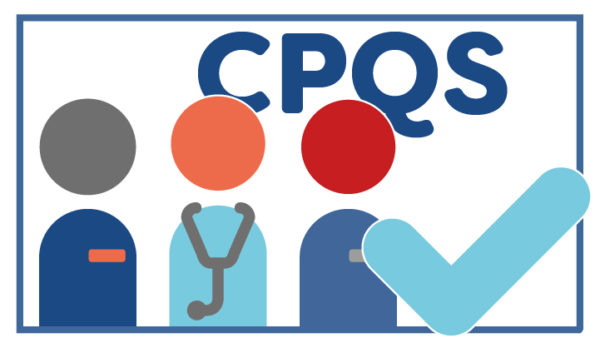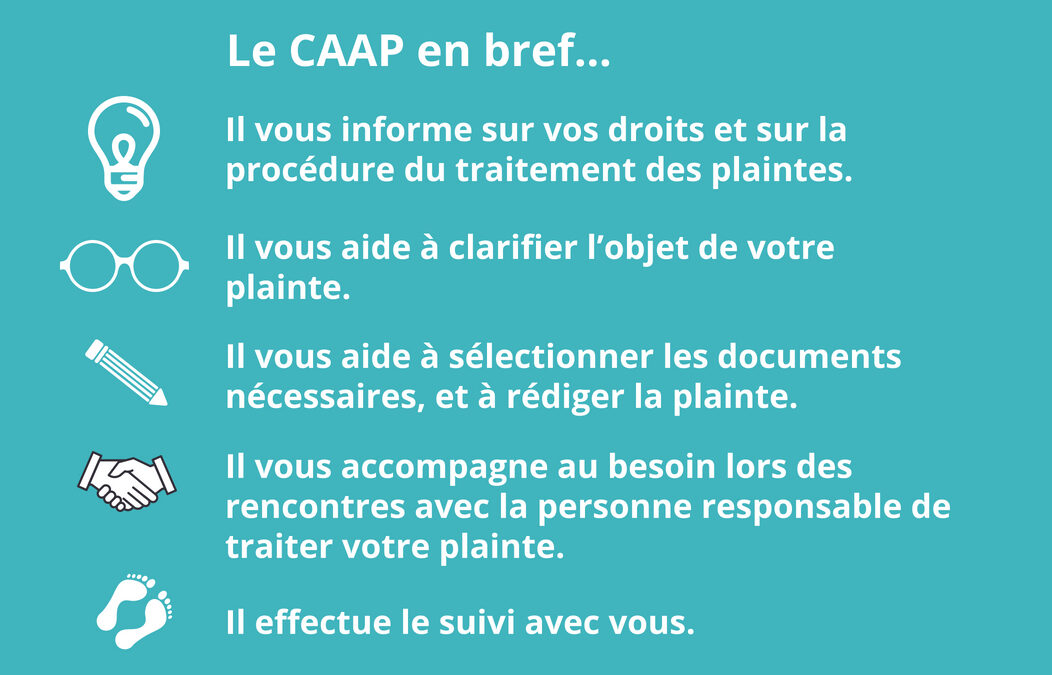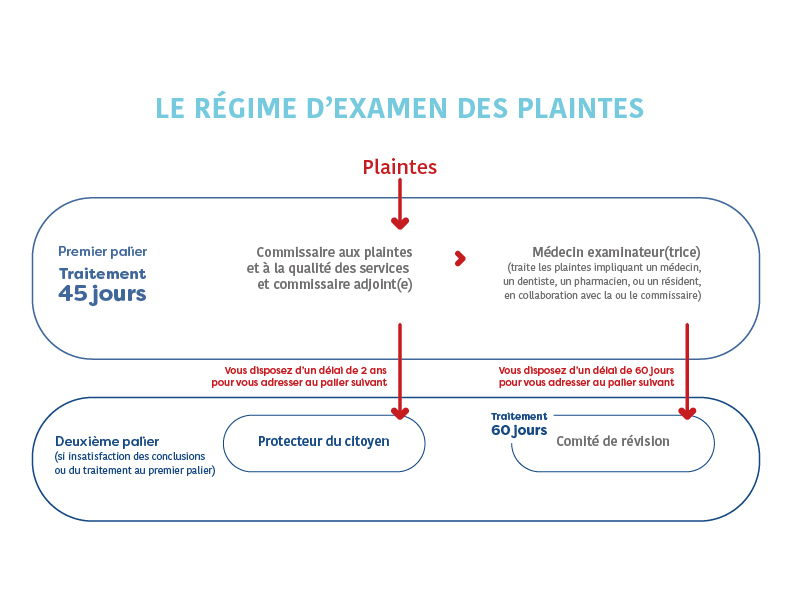Ms. Gauthier(1) requested a semi-private room when she was first hospitalized. However, she ended up in a room with a man and was very uncomfortable because she needed abdominal care. There were no curtains in between the beds because they had been removed for cleaning.
Ms. Gauthier was very disappointed with her experience at the hospital and wanted to file a complaint, but she did not know where or how to go about it. She had heard about the CAAP and decided to call to find out more.
The advisor who spoke to her explained that she would have to file a complaint with the Service Quality and Complaints Commissioner at the hospital where she had been treated and that she could make her complaint by phone or in writing. Ms. Gauthier didn’t feel comfortable phoning the commissioner herself. She told the advisor that she would prefer to file a written complaint, but that it seemed complicated and lengthy, and that she was a little discouraged. The CAAP advisor explained that she could help her draft her complaint. Ms. Gauthier was pleased and made an appointment with the advisor to proceed with the complaint.
During the meeting, the advisor explained to Ms. Gauthier that she was entitled to her privacy and dignity, even at the hospital, and that her desire to file a complaint was legitimate. The advisor took note of the events so she could prepare a letter for Ms. Gauthier to approve and sign. All Ms. Gauthier had to do after that was send it to the commissioner.
The advisor explained to Ms. Gauthier that the Complaints Commissioner would contact her to hear her version of events. She offered to help Ms. Gauthier prepare and even accompany her to the interview. This made Ms. Gauthier feel more confident. She could see that her request was being taken very seriously.
At the end of the commissioner’s investigation, Ms. Gauthier received a letter from the commissioner. The commissioner concluded that Ms. Gauthier’s complaint was justified and informed her that corrective measures had been put in place at the hospital.
According to the commissioner, temporary measures could have been taken to respect Ms. Gauthier’s privacy, such as putting up a portable screen or moving her to a different room. However, since a semi-private room does not exclude the possibility of sharing the room with someone of the opposite sex, Ms. Gauthier learned that she should have been informed of this possibility. In fact, the commissioner told her that she could have asked to change rooms. The Commissioner recognized that Ms. Gauthier had the right to be informed about all of these alternatives.
She therefore asked the hospital admissions manager to correct this by reminding the staff who manage beds to inform patients of all their options. In addition, a written reminder was also sent to all care teams to prevent a similar situation from occurring in the future.
In the end, Ms. Gauthier was able to see that her complaint had helped move things forward.
(1) Not her real name. Any resemblance to actual events experienced by actual persons living or dead is purely coincidental.



